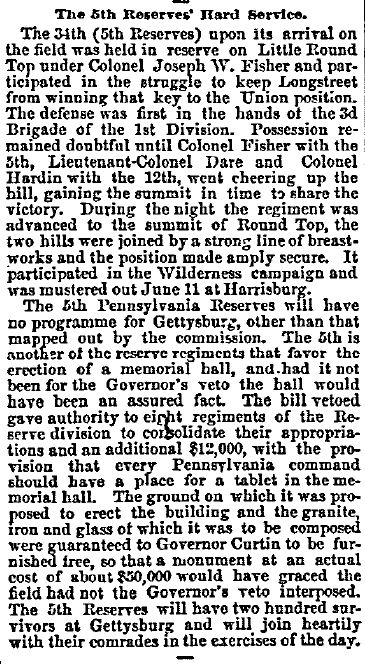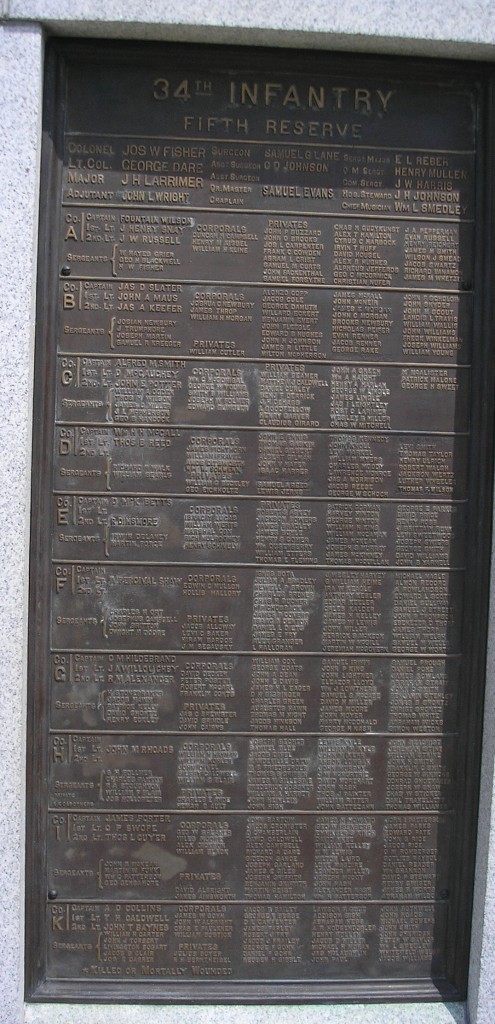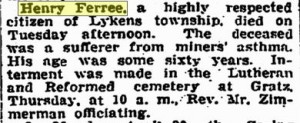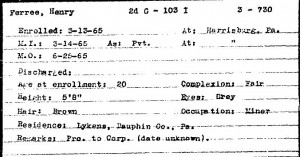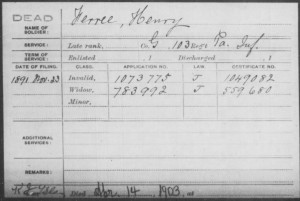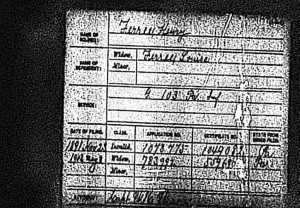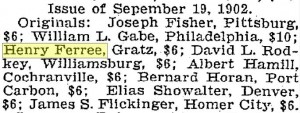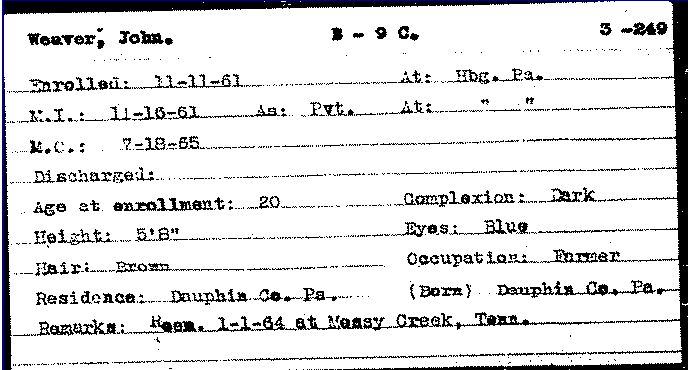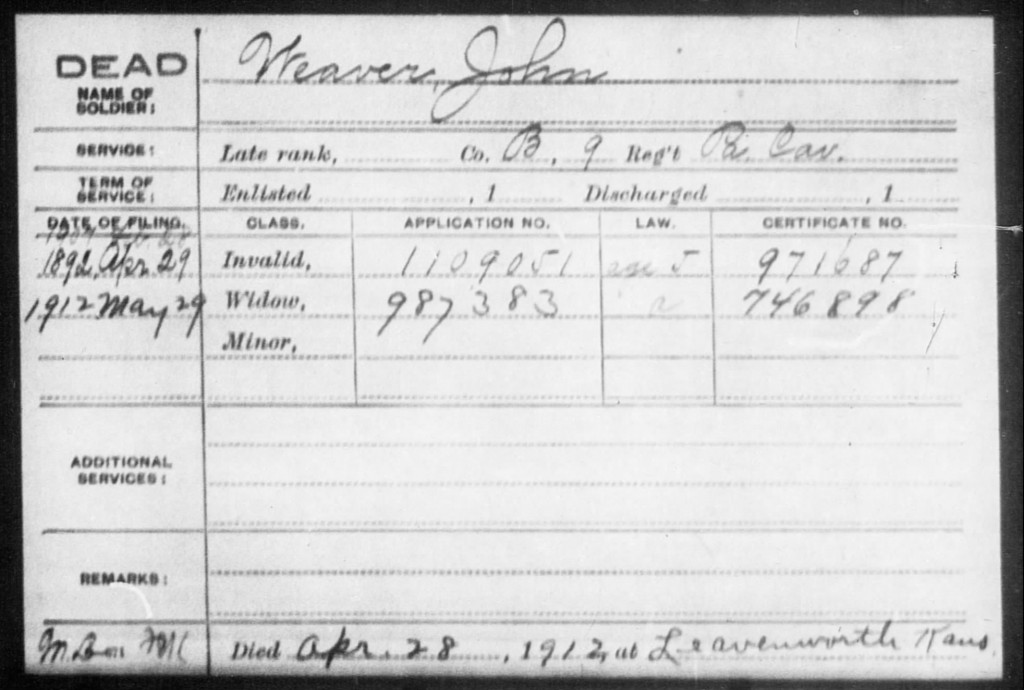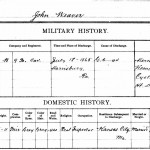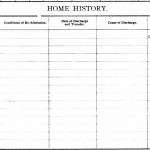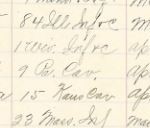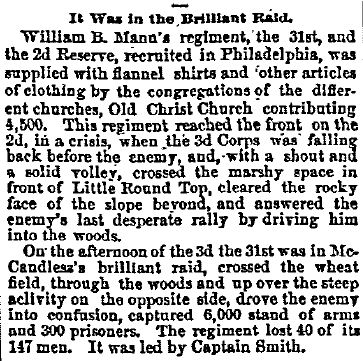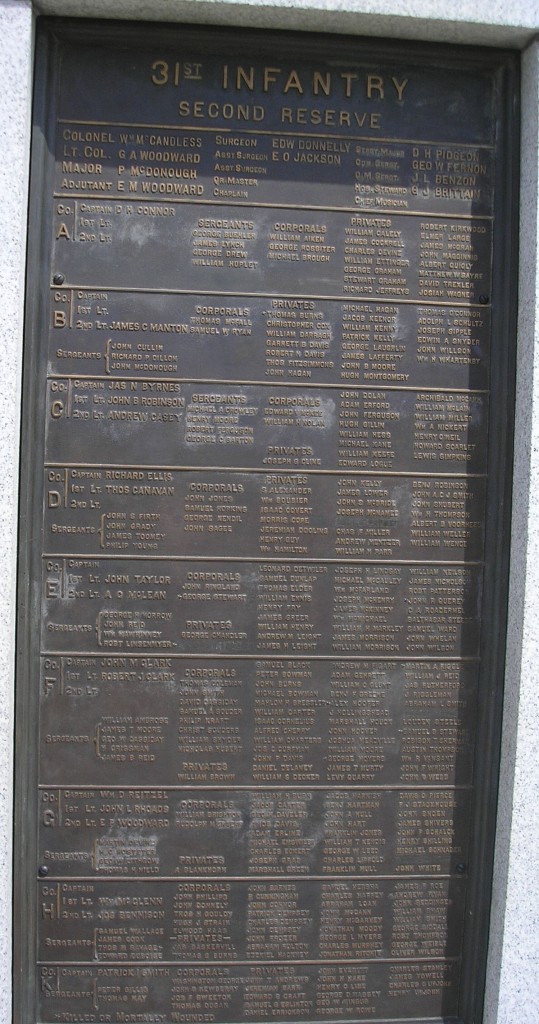Monuments at Gettysburg – 34th Pennsylvania Infantry
Posted By Norman Gasbarro on September 28, 2014

The 34th Pennsylvania Infantry (5th Pennsylvania Reserves) Monument at Gettysburg is located south of Gettysburg on the Big Round Top. It was dedicated in 1890, after the extensive number of battlefield monument dedications that took place in 1889 on the 25th Anniversary of the Battle of Gettysburg. The view of the monument pictured above is from Steve Recker’s Virtual Gettysburg Web Site which has more information about the monument and the 34th Pennsylvania Infantry.
A full description of the monument, its GPS coordinates, and some of the history of the 34th Pennsylvania Infantry can be found on the Stone Sentinels Web Site.
————————-
On 11 September 1889, the Philadelphia Inquirer provided the following information about the 34th Pennsylvania Infantry. The article tells of plans of the 34th to join their funds with other reserve regiments to erect a memorial hall on the battlefield, plans which were thwarted by a governor’s veto.
The 5th Reserves’ Hard Service
The 34th upon its arrival on the field was held in reserve on Little Round Top under Colonel Joseph W. Fisher and participated in the struggle to keep Longstreet from winning that key to the Union position. The defense was first in the hands of the 3rd Brigade of the 1st Division. Possession remained doubtful until Colonel Fisher with the 5th, Lieutenant Colonel Dare and Colonel Hardin with the 12th, went cheering up the hill gaining the summit in time to share the victory. During the night the regiment was advanced to the summit of Round Top, the two hills were joined by a strong line of breastworks and the position made amply secure. It participated in the Wilderness campaign and was mustered out 11 June at Harrisburg.The 5th Reserves will have no programme at Gettysburg, other than that mapped out by the Commission. The 5th is another of the reserve regiments that favor the erection of a memorial hall, and had it not been for the Governor’s veto the hall would have been an assured fact. The bill vetoed gave authority to eight of the Reserve division to consolidate their appropriations and an additional $12,000, with the provision that every Pennsylvania command should have a place for a table in the memorial hall. The ground on which it was proposed to erect the building and the granite, iron and glass of which it was to be composed were guaranteed to Governor Curtin to be furnished free, so that a monument at an actual cost of about $50,000 would have graced the field had not the Governor’s veto interposed. The 5th Reserves will have two hundred survivors at Gettysburg and will join heartily with their comrades in the exercises of the day.
—————————–
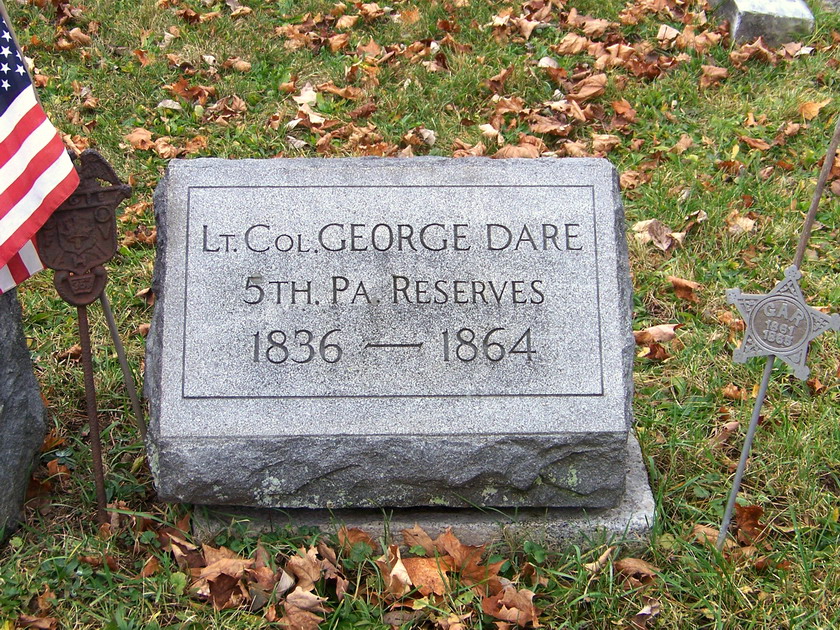
The 29 year old George Dare of Huntingdon County, Pennsylvania was mustered into the service of the 5th Pennsylvania Reserves at Camp Tennally on 6 June 1861 as Captain of Company I. He was 5 foot 9 inches tall, had dark hair, dark eyes, and a dark complexion. His civilian employment had been as a clerk. On 20 June 1861 he was promoted to Major and on 1 August 1862 he was given the rank of Lieutenant Colonel, which he held at the time of the Battle of Gettysburg.
George Dare was born in 1836. He was wounded on 13 December 1862 at Fredericksburg, Virginia, and he was killed in action on 6 May 1864 at the Wilderness. He is buried at Union Cemetery in Belefonte, Centre County, Pennsylvania. More information can be found about him at his Findagrave Memorial.
—————————–
Around the base of the Pennsylvania Memorial at Gettysburg are a series of plaques which, by regiment and company, note the names of every soldier who was present at the Battle of Gettysburg. The plaque for the34th Pennsylvania Infantry is pictured below. By clicking on the plaque it should enlarge so the names can be more easily read. If a name does not appear, it could be that the soldier did serve in the 34th Pennsylvania Infantry, but was not part of the regiment during its days at Gettysburg. There could also be errors on the plaque.
—————————
The news clipping is from the on-line resources of the Free Library of Philadelphia.
 ;
;
